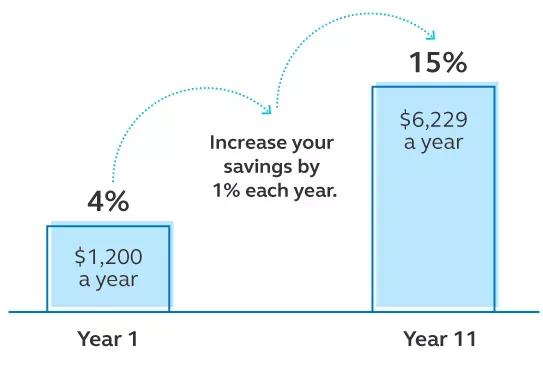Just one check in every year can help you stay on top of your 401(k)—and your retirement savings goals.

If you’re like many people with a 401(k), you might set up your retirement account once—and call it a day. But checking in on your 401(k) at least once a year may pay off big time. In as little as 60 minutes, you can review everything from address updates to new post-work dreams. This list gets you started.
Are you on track to reach your retirement goals?
Part of your yearly 401(k) check-in is a level set: Do you have an age at which you want to stop working, and are you on track to reach those savings needs?
Tip: The Principal® Retirement Wellness Planner can help you set and review benchmarks. (If you have a retirement account managed by Principal, log in to get your personalized score.)
How much are you contributing to your 401(k)?
How much you can put away per paycheck will vary depending on your current competing financial demands—and that’s OK. Here are two questions to consider no matter where you are in your financial journey:
- Are you saving enough to receive the contribution match from your employer, if there is one? (If not, you could be leaving money on the table.)
- Can you boost savings by just 1% each year? Over time, that slight increase adds up.
Let’s say you make $30,000 a year and start retirement savings with 4%. Each year, you increase that rate just a little. Here’s how it adds up.

For illustration purposes only. Assuming 3% yearly raise. Does not reflect federal or state tax or other payroll deductions.
Are your beneficiaries and contact info up to date?
If you’ve experienced a life change—moving, getting married or divorced, welcoming a child—you’ll likely need to make updates to your 401(k) account.
If you’ve moved, update your account information with your new address.
Next, ensure you know what happens to your 401(k) when you die. Double-check and, if needed, update your beneficiaries (the person or people who will receive your retirement savings when you’re gone).
Do you need to rebalance your 401(k)?
Your retirement savings asset allocation is simply the mix of your chosen investments. Depending on your plan, your retirement account may include automatic rebalancing, which readjusts the investment mix to what you originally chose. In other plans, you may have to do it manually.
Can you make catch-up contributions?
The closer you get to retirement, the more you may want to accelerate savings, particularly if you had to pull back to balance other financial goals, such as paying for childcare or a mortgage.
Once you reach age 50, you may be able to take advantage of catch-up contributions—extra money that you can put into retirement accounts if you haven’t reached income and savings limits.
The total catch-up contribution often changes every few years and has increased even more for those aged 60-63 thanks to SECURE 2.0 Act changes.
Have you checked in on any old 401(k)s?
If you’re updating a current 401(k), it’s worth a few minutes to check in on old 401(k)s you may have from previous employers.
If you’ve left them languishing and want to have a centralized spot for your retirement savings to complement your active 401(k), you may consider opening an IRA (or rolling those old funds into an existing IRA). Unlike a 401(k), an IRA moves with you, is not tied to your employment, and you generally can add to it at any time.
Can you save more this year?
If you have flexibility in your budget, there are all sorts of ways to save a little extra for retirement—putting away a portion of a tax refund or bonus, for example.
Next steps
Get started today on your 401(k) catch-up. Log in to your Principal account to see how you’re doing. Don’t have an employer-sponsored retirement account? We can help you set up your own retirement savings with an IRA or Roth IRA account.


